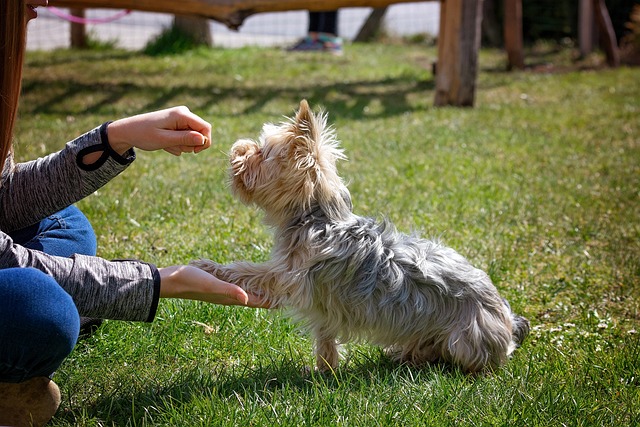How to Look After a Disobedient Dog
While there is no such thing as a bad dog, some dogs don’t listen like they used to, or they’ve never listened and don’t have much obedience. As a dog gets older, this isn’t uncommon. Many dog owners end up frustrated and not knowing what to do when their dog suddenly exhibits different behavior than what they’re used to.
Here is how to look after a disobedient dog and get them on the right track.
Try to Determine Why Your Dog Is Being Disobedient
The root causes of disobedience can vary from a lack of training to anxiety, inconsistent rules, or specific environmental triggers. If you need clarification on why your dog is not listening, consult a dog behaviorist or a professional dog trainer.
Use Basic Commands Every Day to Improve Obedience
Start by using basic commands in short daily training sessions. Commands like ‘sit,’ ‘stay,’ and ‘come’ can improve obedience. For motivation, use your favorite high-quality dog food. This is preferable to using treats.
Keep Training Sessions Short and Focused
Keep a training session under ten minutes. Excess time will break a dog’s engagement, and the pet owner will only end up frustrated.
Use Clicker Training for Positive Reinforcement
Use a clicker to mark desired behaviors precisely. This will help your dog understand what gets rewarded when you use high-quality dog food or treats and offer direct and precise feedback.
Burn Excess Energy With Daily Exercise
Walk your dog. Give them their fair share of activity every day. Your dog’s recommended activity level is based on breed, age, and health. Walking, fetch, or agility training will help tire a dog out and reduce the presence of disobedience.
Make Training Fun When It Makes Sense
When you mix up what you do for training and combine obedience with interactive games or agility exercises, the more fun your dog has, the more they will not realize that they are engaged in training.
Do Not Overfeed Your Dog with Low-Quality Treats
Most pet owners reach for treats when teaching a dog to be obedient. Treats are empty calories. Please do not include them in your dog’s daily calorie intake. Try using small portions of dog food instead.
Use Positive Reinforcement to Reward Desired Behaviours
Positive behavior should be rewarded with premium-grade dog food. Avoid punishment when a dog does not do what you wish. Punishment increases anxiety and worsens disobedience – the opposite of what you want.
Avoid Using Your Dog’s Name in a Reprimanding Tone
Do not do anything that would cause your dog’s name to be associated with a negative experience. Speak firmly and directly when your dog does something it is not supposed to, but never in a reprimanding way.
Practice a Tone of Voice That Is Firm and Calm
Your tone of voice should be consistent. Do not shout, as shouting can increase anxiety and cause your dog to ignore you.
Be Consistent with Rules That You Set
Household rules should be clear to a dog. Be consistent with what you are teaching and set firm rules. Ensure all family members and roommates know what the rules are and reinforce them as well so that there are no mixed signals.
Do Not Accidentally Reinforce Bad Behaviour
Be sure not to reward unwanted behavior. Do not give negative behavior attention or threats. If a dog jumps on you, ignore it until it settles. After it is calm, reward that behavior.
Recognize It May Be Very Natural for a Dog to Be Disobedient
A young puppy, at a certain point, will become more exploratory. They may start testing boundaries and become distracted by new sights, sounds, and smells. Do not punish them for what’s natural and intuitive.
Have Patience When You Start Training Your Dog
When training your dog, recognize that it will take time. Reinforce training and be patient instead of getting frustrated. Avoid rough handling. Physical punishment may cause your dog to fear and be anxious, leading to stress and increased aggression outside disobedience training.
Attach Obedience to Real-Life Scenarios
Use commands during daily routines. Ask your dog to sit before meals. Advise them to stay when opening doors. Practice in real life so your dog knows the expectation to maintain obedience outside of training sessions.
Implement Distractions into Your Real-Life Disobedience Training
Expose your dog to distractions during training – gradually at first. See if your dog can maintain focus in challenging settings. You may want to use a leash for control during initial exposure. Always reward and obey commands so your dog knows they are doing something right.
Use a Crate Training Program to Create a Safe Space
Your dog’s crate is their safe space. Use it to establish boundaries. Create a safe space to help manage disobedience behaviors with a high-quality and appropriately sized crate. Avoid using the crate as punishment. Keep it consistent, safe, positive, and comfortable.

